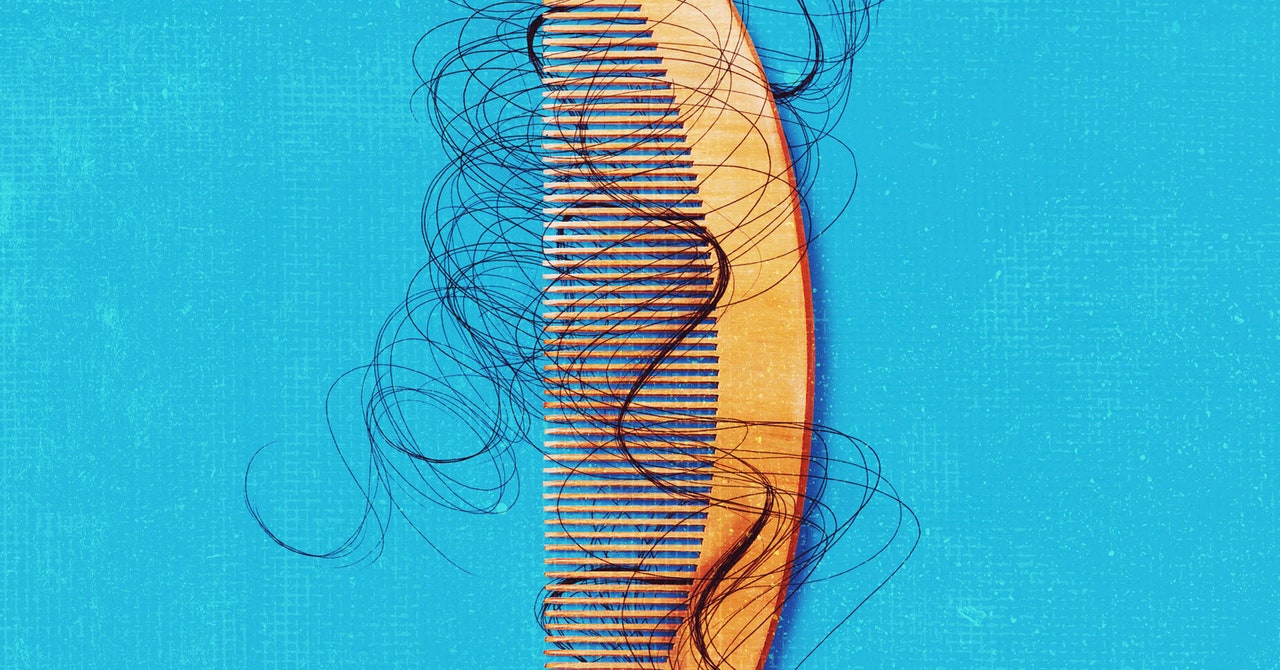
Next, they got patients from a hair transplant clinic to donate follicles, then grafted those healthy hairs onto mice. Follicles normally undergo a sort of shock after a transplant, going dormant for a couple months. Plikus suspected that osteopontin could rouse the grafted follicles faster. Thirty days after grafting, some of these mice received osteopontin injections. Twenty days later, only those mice had sprouted human hair.
So far, the lab’s new paper has been well received—at least when it comes to the conclusions about growing hair. “It’s a really well-done and convincing paper,” says Valerie Horsley, a cell biologist at Yale University who was not involved in the work. Horsley likes that the team also pinpointed the follicle protein (CD44) that receives the signal from osteopontin. Without it, osteopontin has no effect. Tinkering with either could help regrow human hair, she thinks: “That would be cool. And we could inhibit it—stop hair growth in areas where we don’t want hair to grow.”
“It’s very exciting,” says Etienne Wang, a clinician-scientist specializing in hair at National Skin Centre Singapore. “We see hairy moles all the time. And no one ever really put two and two together.” He calls the results an important glimpse into what controls hair growth. “But I think we have to be quite cautious as well,” Wang says. It’s too early to tell whether this work will work as well on human scalps, or whether it could regrow dense hair. Most nevi only sprout a couple scraggly hairs. “It’s usually not a mole that’s got a full head of hair,” he says.
The takes on what this study might say about cell senescence are more mixed. “I was quite surprised,” says Claire Higgins, an expert in human hair biology at Imperial College London who was not involved in the work. “It challenges the dogma,” she adds, that dormant cells always damage their neighbors.
Higgins felt convinced by Plikus’ case, but others are more cautious. “Overall, I love the paper, which is something I don’t say very often,” says Horsley. But she points out that scientists don’t know much about how melanocytes affect their environment. Maybe they appear senescent but really aren’t. Or maybe the fact that they secrete osteopontin has nothing to do with being senescent. “That’s the link that they didn’t make,” she says.
Horsley is holding out for more compelling evidence. “There hasn’t been a lot of evidence for what senescence does in tissues,” she continues. “When anybody finds something, it’s a big deal.”
Plikus knows it’s a bold hypothesis. But recent animal research has offered a bit of support. He points to studies of zebrafish: If you amputate part of an adult’s fin, some of the remaining cells turn senescent. The fin naturally grows back, unless you remove the senescent cells. The same happens during mouse embryo development, and when researchers cut adult mouse livers and salamander limbs. All of these suggest that senescent cells can release proteins that help the body heal. For that reason, Plikus thinks it’s plausible that molecules from aged cells could help grow hair.
Plikus’ startup, Amplifica, began human clinical trials of a proprietary version of osteopontin in June. Participants will get it as a microneedle injection into the scalp. (He envisions it one day becoming a twice-a-year treatment, like Botox or a dental cleaning.) Amplifica is also continuing preclinical studies of SCUBE3.
It’s still not clear whether his lab has stumbled across a phenomenon common to all aging tissues, or whether nevi are simply unique. But Higgins thinks that figuring out how to kickstart hair growth is fascinating enough. “He’s shown how a thing we all know happens actually occurs,” she says. “It’s a testament to his foresight that he was able to take this observation and run with it.”

